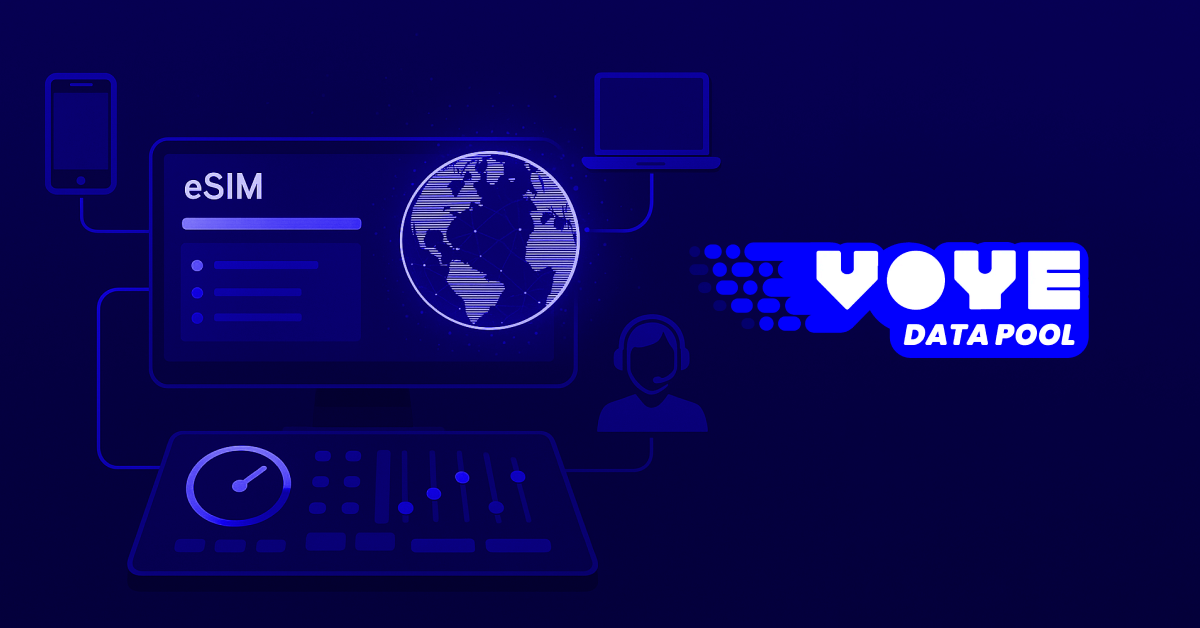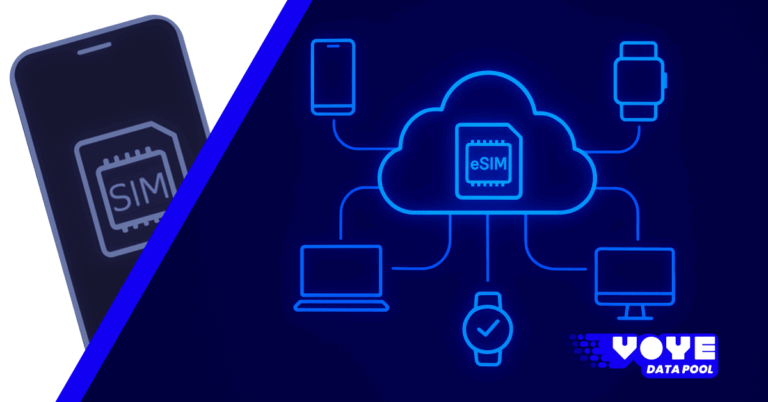How to Centrally Manage Employee Connectivity with eSIMs
Learn how centralized eSIM management empowers businesses to easily activate, monitor, and control employee connectivity across multiple locations—enhancing efficiency, security, and cost transparency in global operations.

Why Employee Connectivity Needs a Central Strategy
In today’s enterprise world, connectivity is no longer a background IT function. It has become a strategic driver of workforce productivity. Employees expect to join a video call from an airport lounge, collaborate in real time during international assignments, or access secure apps while on the move.
Yet, for many organizations, providing seamless global connectivity remains a challenge. Physical SIM card distribution, unpredictable roaming charges, and fragmented telecom contracts make it difficult to deliver a unified experience. For HR, IT, and operations leaders, these inefficiencies create delays, higher costs, and unnecessary friction.
This is where eSIM technology changes the game. By moving connectivity management into a digital and centralized platform, enterprises can give employees instant access to reliable data worldwide without shipping SIMs or juggling multiple providers.
As a Voye Data Pool for Business partner, enterprises gain the ability to manage global employee connectivity from one secure hub, ensuring that staff stay connected wherever they travel.
The Traditional Way: Why Managing SIM Cards Does Not Work Anymore
Before eSIM adoption, companies had to rely on physical SIMs, which presented several challenges :
- Logistics overhead : IT teams spent hours shipping SIM cards to remote employees.
- High roaming costs : Fixed contracts made it hard to predict expenses.
- Lack of visibility : Once employees were abroad, monitoring usage became nearly impossible.
- Employee frustration : Delays in activating services often meant employees were offline when they needed to be most productive.
For global enterprises with frequent travel requirements, this model was unsustainable. It created bottlenecks at exactly the time when employees needed agility.
The eSIM Advantage for Enterprises
eSIM technology transforms employee connectivity by embedding digital SIM profiles directly into devices. Employees no longer need to swap physical cards. Instead, their device can connect instantly with a secure profile provisioned by their employer.
For enterprises, this delivers four critical advantages :
1. Centralized Management
IT teams control activation, data allocation, and monitoring through one dashboard instead of juggling multiple providers.
2. Global Coverage
Employees can travel seamlessly between countries without facing downtime or surprise roaming fees.
3. Instant Scalability
New hires or temporary staff can be onboarded with connectivity in minutes instead of weeks.
4. Cost Control
Data pools ensure that enterprises only pay for what employees use, avoiding waste and ensuring predictable expenses.
Why Central Management Matters for Enterprises
Centralized management is not only about convenience. It is about control, compliance, and employee satisfaction.
For HR Teams
Onboarding is faster and smoother when new employees can connect instantly on their first day. HR avoids logistical headaches and provides a positive first impression.
For IT Leaders
Instead of troubleshooting connectivity on a case-by-case basis, IT manages everything from one secure platform. This increases visibility, reduces shadow IT risks, and ensures policies are enforced consistently.
For Finance Leaders
With centralized dashboards, finance teams get real-time reporting on usage and costs. This predictability makes budget planning easier and reduces surprises.
For Employees
Perhaps most importantly, employees stay connected without interruptions. Whether they are in a regional office, working from home, or traveling abroad, they can rely on consistent connectivity.
How Enterprises Can Implement Centralized eSIM Management
Central management does not happen overnight. Enterprises must take a structured approach to transition from fragmented SIM usage to a unified eSIM model.
Step 1 : Assess Connectivity Needs
Map out your workforce :
- How many employees travel internationally?
- Which devices such as laptops, tablets, smartphones, or IoT sensors need connectivity?
- Where are the biggest gaps in your current setup?
Step 2 : Choose a Global Partner
Select a partner such as Voye Data Pool that offers enterprise-grade management tools, global coverage, and secure data pooling. The right partner ensures that your IT and HR teams can scale without complexity.
Step 3 : Provision eSIMs Centrally
Use a platform that allows bulk activation and profile management. This ensures new employees or devices can be added instantly without physical shipping.
Step 4 : Monitor and Optimize
Leverage analytics dashboards to monitor usage, allocate data dynamically, and adjust policies as needed. This helps avoid overspending and ensures fair allocation across teams.
Case Scenarios: Central Management in Action
Scenario 1 : HR Onboarding Remote Employees
A multinational company hires 25 new employees across Asia and Europe. Instead of mailing SIM cards, HR uses Voye Data Pool to instantly provision eSIM profiles. Employees connect on day one, HR saves on shipping, and onboarding is smoother.
Scenario 2 : IT Supporting Global Travelers
An IT team oversees 200 employees who frequently travel across continents. With centralized management, IT monitors usage in real time, reallocates data when needed, and ensures compliance with corporate policies.
Scenario 3 : Finance Controlling Connectivity Costs
A CFO wants to eliminate surprise roaming bills. By shifting to pooled eSIM data, finance can forecast monthly costs with accuracy while still ensuring all employees remain connected.

Seamless eSIM Connectivity for Enterprises
Activate, manage, and scale eSIMs with ease.
Benefits of Centralized eSIM Management with Voye Data Pool
When enterprises partner with Voye Data Pool for Business, they gain access to :
- One Secure Platform : Manage every employee’s connectivity from a central hub.
- Instant Global Coverage : Employees stay connected whether they are in Paris, New York, or Singapore.
- Real-Time Monitoring : Track data usage, prevent overages, and reallocate resources instantly.
- Employee Productivity : Eliminate downtime and improve collaboration.
- Cost Efficiency : Shared data pools ensure every gigabyte is maximized.
Being a partner means more than just connectivity. It means equipping your teams with the tools they need to succeed globally.
Future Outlook : Why Centralized eSIM Management Becomes the Standard by 2030
The trajectory is clear. By 2030, centralized eSIM management will be the global standard for enterprises. As more devices become eSIM-enabled and as workforces continue to spread across borders, organizations that cling to outdated SIM models will struggle to keep up.
Forward-thinking enterprises that adopt Voye Data Pool today gain a competitive advantage: lower costs, happier employees, and greater operational agility.
Conclusion: Simplifying Global Employee Connectivity
Managing employee connectivity does not need to be a headache. With eSIM technology and centralized platforms, enterprises can move beyond physical SIM cards and fragmented telecom contracts. They can activate, monitor, and optimize connectivity globally from one place.
For HR, IT, and finance leaders, the benefits are immediate: smoother onboarding, predictable budgets, and empowered employees. For employees, it means the confidence of knowing that wherever work takes them, connectivity follows seamlessly.
As a Voye Data Pool for Business partner, your enterprise is not just keeping up with the future of connectivity. It is leading it.
Frequently Asked Questions
How does central eSIM management save time for IT teams?
It removes the need for physical SIM distribution and troubleshooting. IT manages all employee profiles from a single dashboard.
Can employees use eSIMs across multiple countries?
Yes. With global coverage, employees can connect seamlessly across regions without needing new SIM cards.
How does central management reduce costs?
By pooling data across employees, enterprises minimize waste and avoid roaming fees. Finance teams gain predictable, transparent billing.
Is eSIM management secure?
Yes. Platforms like Voye Data Pool use enterprise-grade encryption and centralized controls to ensure compliance and security.
Why partner with Voye Data Pool for Business?
Because it gives enterprises a single, secure solution to provide instant global connectivity to employees, backed by real-time monitoring and cost control.



 6 min read
6 min read





